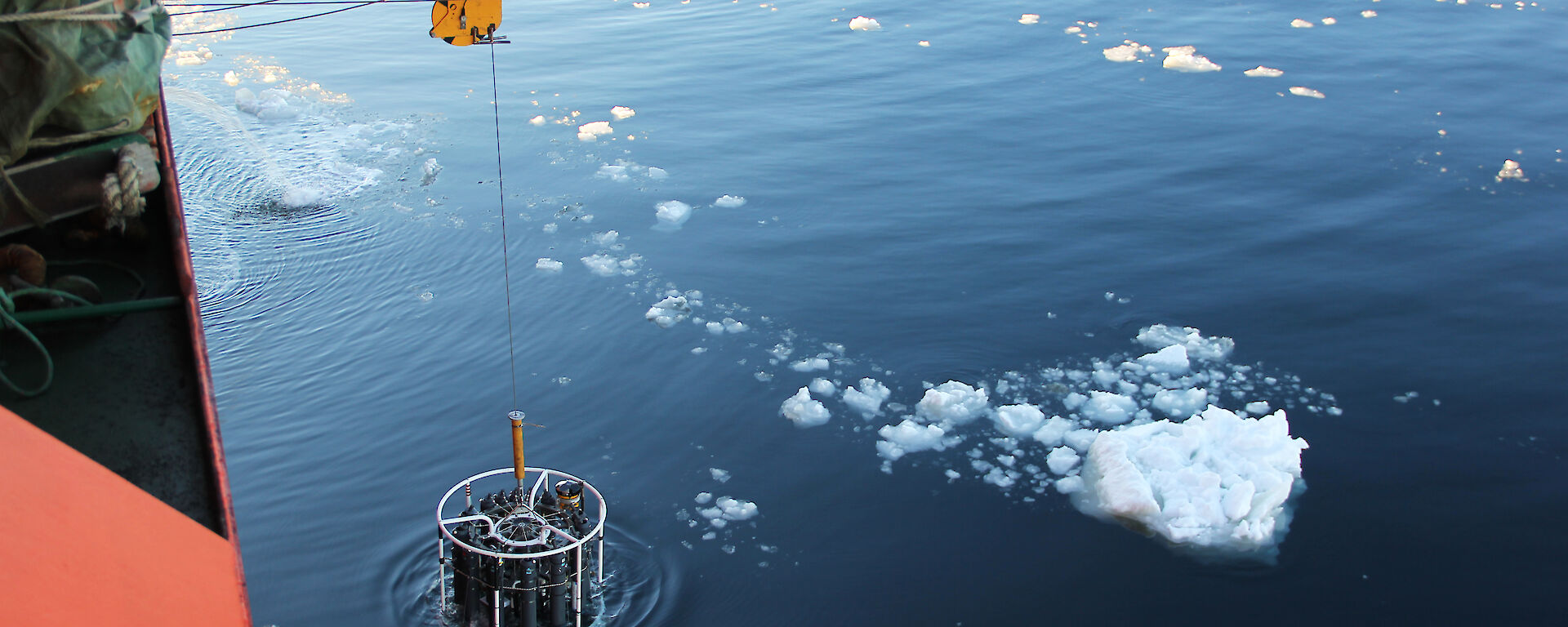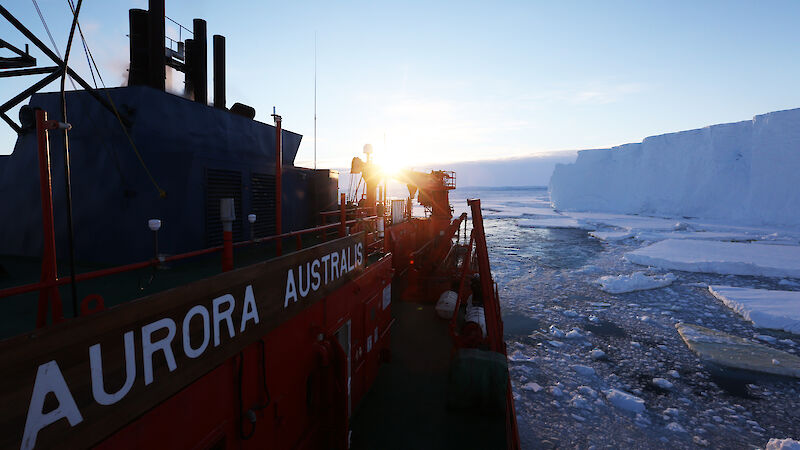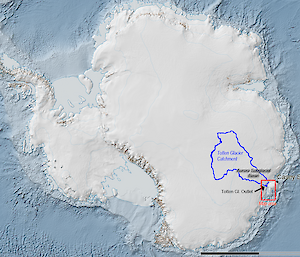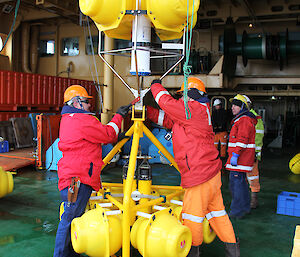Warm ocean water is likely melting the largest glacier in East Antarctica from below.
For the past 15 years satellites have shown that the Totten Glacier in East Antarctica has been thinning faster than other glaciers in the region. While theories existed as to why, no one had been able to breach the thick sea ice around the region to find out.
Then in January this year a team of scientists on board Australia’s icebreaking ship, Aurora Australis, managed to reach the face of the glacier and deploy a suite of high-tech instruments that could help solve the puzzle.
‘We wanted to test the theory that warm ocean water is reaching the glacier and is capable of driving melt,’ Voyage Chief Scientist Dr Steve Rintoul, from the Antarctic Climate and Ecosystems Cooperative Research Centre, said.
‘Initially I didn’t think we’d be able to reach the glacier, but we got just the right weather and wind conditions to take advantage of a crack that opened up in the sea ice and extended all the way to the glacier front.
‘And we found evidence that warm water does indeed reach the Totten Glacier.’
The Totten Glacier is the largest glacier in East Antarctica and drains 538 000 square kilometres. Seventy billion tonnes of ice flow out of it every year. Like a giant tongue, the glacier sweeps down the continental land mass and then juts out another 120 kilometres into the ocean.
‘The front of the glacier where we made our measurements is about 200 metres thick, and it gets thicker as it goes back towards the continent and the grounding line — where the glacier leaves the bedrock and starts to float. This grounding line is two kilometres below sea level,’ Dr Rintoul explained.
The floating ice shelves around the edge of Antarctica act like a buttress, allowing thick layers of ice to accumulate on the continent. When the ice shelves thin or collapse, this allows more ice to flow from the continent to the sea, raising sea level. Glaciers that are grounded on rock well below sea level are particularly vulnerable to warming of the ocean or changes in ocean currents. Indeed, model simulations suggest the Totten Glacier could be melting at a rate of more than 50 metres per year in the deepest part of the ice shelf (Australian Antarctic Magazine 21: 14–15, 2011). The deep basin drained by the Totten Glacier, known as the Aurora Basin, could contribute some 3.5 metres of ocean warming-driven melt to global sea level rise.
‘This study will help us address one of the biggest questions concerning future sea level rise — how will changes in ocean temperature or currents affect the Antarctic ice sheet?’ Dr Rintoul said.
To find out, the research team deployed a range of floats, gliders and traditional ocean profiler instruments to measure temperature at the glacier front and to obtain chemical evidence of glacial meltwater in seawater samples.
‘We can detect the melting of glacial ice in a few different ways,’ Dr Rintoul said.
‘One way is through temperature. If our water samples are less than minus two degrees Celsius we know they must contain melt water from below the ice shelf, where the high pressure depresses the freezing point. Another way is through chemistry. As glacial ice melts, it leaves a signature in the water that we can detect using different chemical elements and isotopes of helium and oxygen.’
The team found that water temperature at the front of the Totten Glacier is about three degrees warmer than the melting point at the grounding line. This provides a measure of how much heat is available to melt the ice.
Worryingly, geophysical research published two months after the voyage, revealed a seafloor ‘gateway’ that could allow this warm ocean water to reach the base of the glacier, with consequences for ice melt and sea level rise (see Hidden oceanic gateway beneath Totten Glacier).
During the voyage the team also visited the front of the Mertz Glacier, which calved in spectacular fashion in 2010. As a result of this calving the functioning of the region — which previously acted as a ‘sea ice factory’ — changed dramatically. Australian and French researchers deployed a number of moorings in the region immediately after the calving to collect temperature and chemistry data and these moorings were collected by Dr Rintoul’s team.
‘The Mertz Glacier region is a place where cold, dense, Antarctic Bottom Water is formed, which contributes to a global pattern of ocean currents that regulates climate,’ Dr Rintoul said.
‘These moorings will provide an unprecedented view of what’s happened since the tongue calved. We’ll also be able to compare the results with those from the Totten Glacier.
‘We know the Mertz Glacier is not thinning as rapidly as the Totten Glacier, so these analyses will give us insights into why that’s so and this in turn will tell us more about how Antarctica will change in the future.’
Wendy Pyper
Australian Antarctic Division.
The seven week marine science voyage was funded through the Australian Research Council’s Special Research Initiative for Antarctic Gateway Partnership, the Australian Antarctic Division, the ACE CRC, CSIRO and the Integrated Marine Observing System.





